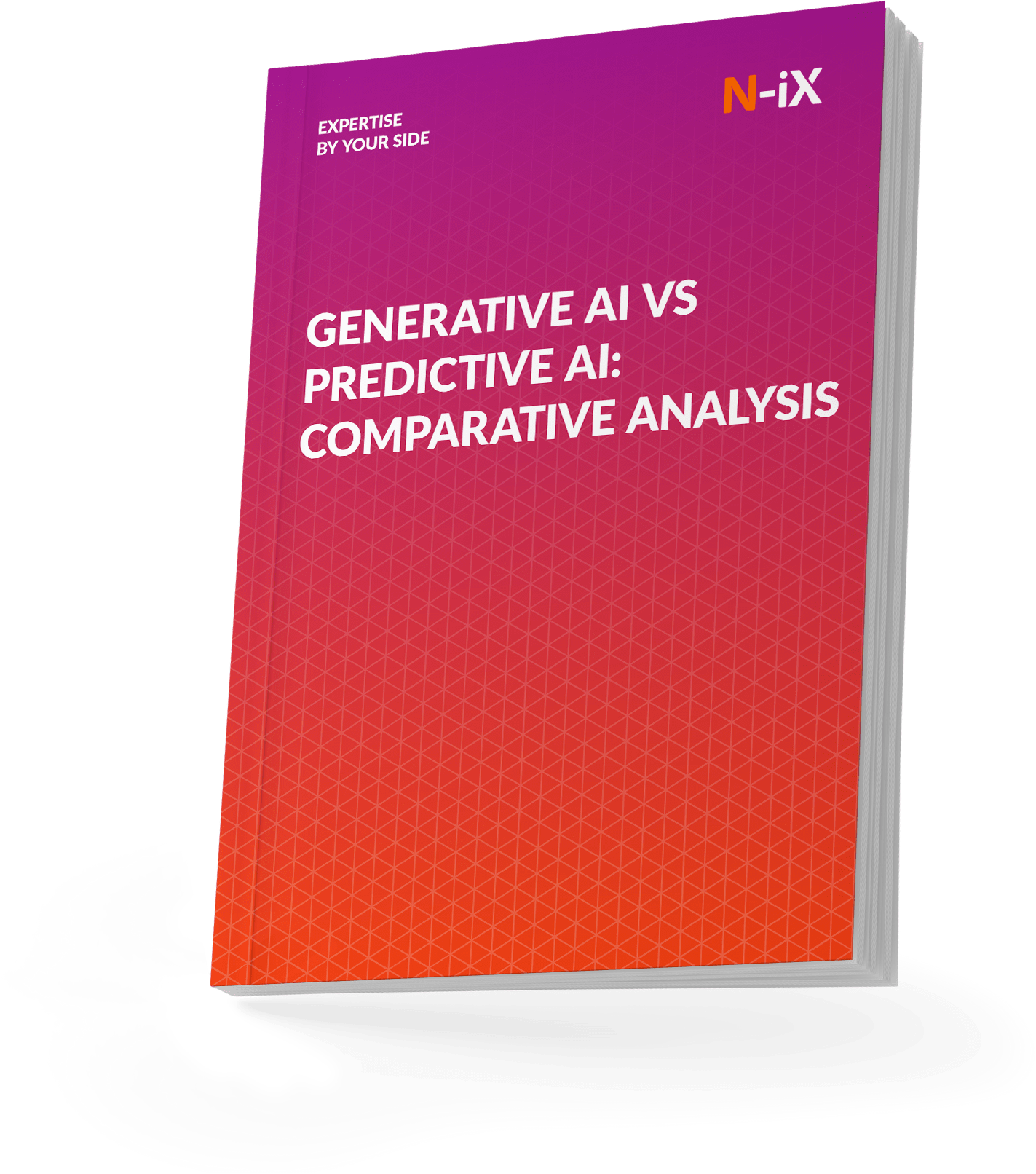Retaining a customer costs significantly less than acquiring a new one. Yet churn often goes unnoticed until the damage is done: lower revenue, declining customer lifetime value, and a weakened market position.
Churn reflects the gap between what customers expect and what they experience; it signals that something is wrong. Customers leave for many reasons-poor experiences, unmet expectations, or better offers from competitors. Traditional methods like broad retention campaigns or manual analysis often fail because they miss the subtle patterns that predict churn. They're reactive when what you need is to be proactive.
That's where Machine Learning (ML) comes in. Machine Learning empowers businesses to proactively address customer attrition by uncovering subtle patterns and indicators within vast datasets. So, how does this work, and what does it mean for your business? Let's dive into how ML transforms churn prediction, why it matters for enterprises, and how it can give you an edge in keeping your customers loyal.
What does Machine Learning provide to churn prediction?
Traditional methods of predicting churn often relied on retrospective analysis, identifying customers who had already left and trying to generalize their behaviors. While helpful, this approach lacks the foresight to prevent churn before it happens. Machine Learning overcomes this limitation by analyzing historical and real-time data to forecast future behavior, enabling organizations to act before customers decide to leave.
At its core, churn prediction relies on data-driven insights to answer critical questions: Which customers are likely to leave? Why are they leaving? And how can the organization proactively address these risks to retain them?
Here are some key questions that ML helps answer in the context of churn prediction:
- What if we offer a targeted discount to at-risk customers-will it improve retention? Machine Learning analyzes historical data to simulate the outcomes of targeted offers and predict their effectiveness.
- What if a new feature is introduced-how will it impact churn rates? ML identifies potential customer responses to feature changes by analyzing past behavior and current engagement trends.
- Are specific customer segments more likely to churn based on their usage patterns? ML segments customers based on behavioral data, highlighting those with the highest churn probability.
- When is a customer most likely to churn, and how soon should interventions be implemented? ML predicts the timing of churn by analyzing customer behavior patterns and identifying early warning signals.
- When should retention campaigns be launched to maximize their impact on at-risk customers? Machine Learning provides insights into the optimal timing for retention efforts based on real-time data and predictive analytics.
- What if we identify the pain points of specific churn-prone segments-can we improve satisfaction and loyalty effectively? ML uncovers key drivers of dissatisfaction by analyzing feedback, interaction logs, and behavioral trends.

Answering these questions is essential for developing actionable retention strategies, and this is where N-iX leverages its expertise in Machine Learning. By bridging the gap between predictive insights and operational execution, we make churn prediction a valuable tool for enhancing business outcomes.
N-iX collaborates with clients to leverage Machine Learning for churn prediction, delivering tailored solutions that drive measurable outcomes. We implemented ML models for a leading ecommerce platform to calculate subscription churn probabilities, enabling the client to craft personalized email campaigns and improve customer retention.
By adopting serverless workflows on AWS, leveraging tools like SageMaker, and applying MLOps best practices, we automated marketing processes, reduced operational costs, and enhanced system flexibility.
Explore more details: Enhancing ecommerce services with ML-powered churn prediction calculation
Key benefits of Machine Learning for churn prediction
Machine Learning offers the highest precision and efficiency in predicting customer churn. Let's explore the key benefits Machine Learning brings to churn prediction.
Predictive accuracy
Traditional churn prediction methods often fall short due to their reliance on linear assumptions and fixed thresholds. Machine Learning for churn prediction, on the other hand, leverages advanced algorithms to analyze vast and complex datasets, uncovering patterns that might be invisible to human analysts. This leads to significantly higher accuracy in identifying at-risk customers.
- ML adapts to changes in customer behavior over time, and controlling predictions remain relevant even in rapidly evolving markets.
- By processing non-linear relationships between variables, ML captures subtle correlations that static models cannot, such as the interplay between engagement frequency and purchase behavior.
- ML models can process live data streams, enabling businesses to react swiftly to potential churn indicators.
Enhanced decisions based on insights
ML predicts churn and provides actionable insights into its root causes. By identifying key churn drivers, such as dissatisfaction with specific features or poor service experiences, ML equips businesses with the knowledge needed to address underlying issues.
- Algorithms like random forests or decision trees rank variables contributing to churn, highlighting areas requiring immediate attention.
- Advanced ML models enable businesses to simulate the impact of various interventions, helping them choose the most effective retention strategies.
- ML pinpoints the factors contributing to churn, such as dissatisfaction with features, pricing concerns, or poor service experiences.
Proactive customer retention
Machine Learning enables organizations to predict churn before it happens, allowing businesses to take preemptive actions. As a result, churn prediction using Machine Learning transforms customer retention strategies from reactive to proactive by:
- Identifying at-risk customers early, based on behavioral and transactional patterns.
- Enabling targeted outreach campaigns to address specific pain points.
- Reducing churn rates through timely interventions, such as personalized offers, improved customer support, or product enhancements.
Uncovering hidden patterns
Unlike traditional rule-based approaches, ML excels at uncovering subtle and previously unseen patterns in data. These insights can reveal key drivers of churn and inform targeted retention strategies.
ML identifies intricate relationships between variables, such as how usage patterns, payment history, and engagement metrics combine to predict churn likelihood. By analyzing historical data, ML algorithms anticipate future behaviors, allowing businesses to address churn risks before they materialize.
How churn prediction with Machine Learning works
Customer churn prediction using Machine Learning is a structured, data-driven process that enables organizations to identify customers likely to discontinue their engagement. Unlike traditional methods that rely on static rules or retrospective insights, Machine Learning leverages vast datasets and sophisticated algorithms to anticipate churn precisely. Here are the key stages to understand how this process works and delivers measurable outcomes.

1. Data collection
The foundation of effective churn prediction lies in collecting comprehensive and high-quality data from multiple sources. This includes:
- Behavioral data, which provides insights into how users interact with your product or service. For instance, how frequently are specific features used? How long do users stay active during each session? Are users engaging less frequently compared to their historical behavior?
- Transactional data: This tracks financial interactions, such as whether repeat purchases are declining, if there are late payments or missed billing cycles, or whether customers have downgraded their plans or canceled automatic renewals.
- Interaction data, which includes customer service logs, survey feedback, and public sentiment. How often are customers reaching out to support? What do NPS scores or CSAT ratings reveal about customer satisfaction? Are there public complaints or negative reviews that signal dissatisfaction?
A seamless integration of data sources is only the first step; ensuring the reliability and usability of this data is equally important.
Data quality is non-negotiable in Machine Learning for churn prediction. Inconsistent, incomplete, or inaccurate datasets can compromise model performance and lead to unreliable predictions. Optimizing data quality involves cleaning and preprocessing data to remove duplicates, handle missing values, and standardize formats. This step minimizes noise and ensures that the ML algorithms can focus on meaningful patterns. Moreover, enterprises must establish robust data governance frameworks to maintain data integrity and reliability throughout the model lifecycle.
2. Data preprocessing
Raw data often requires significant refinement before it can be effectively utilized in Machine Learning models. The first step is data cleaning, which involves removing duplicates, handling missing values, and resolving inconsistencies to ensure the dataset's accuracy and reliability. Once the data is clean, the focus shifts to feature engineering, where relevant variables are identified or created to highlight factors that significantly impact churn. Examples of such features include inactivity duration, frequency of customer complaints, or the time elapsed since the last purchase.
Additionally, normalization and encoding are applied to prepare the data for churn prediction using Machine Learning. This process involves converting categorical variables into numerical formats and standardizing the data to ensure compatibility across various models. Effective preprocessing is essential as it allows the Machine Learning model to concentrate on meaningful patterns, minimizing the risk of noise or biases skewing the predictions.
3. Model training
Once the data is prepared, the focus shifts to selecting and training Machine Learning models. Common algorithms for customer churn prediction using Machine Learning include:
- Logistic regression: This algorithm is effective for binary classification tasks, such as predicting whether a customer will churn or not. Its simplicity and interpretability make it a reliable choice for understanding the impact of various features on churn probability.
- Decision trees and random forests: These methods are adept at capturing complex, non-linear relationships between variables. Random forests, in particular, enhance predictive accuracy and mitigate overfitting by aggregating multiple decision trees.
- Neural networks are particularly valuable for handling complex datasets with numerous dimensions, as they excel at identifying intricate patterns and deep dependencies within the data.
Training a churn prediction model involves teaching it to recognize patterns and correlations in historical data that indicate the likelihood of customer churn. The process begins with splitting the dataset into training and testing subsets, typically allocating 70-80% for training and 20-30% for testing to ensure the model is evaluated on unseen data for reliable performance assessment. During the learning phase, the model iteratively adjusts its parameters to minimize prediction errors, often using optimization techniques like gradient descent. Hyperparameter tuning follows, optimizing variables such as learning rates, regularization terms, and tree depths through grid or random search to balance accuracy and generalization.
Finally, metrics for churn prediction using Machine Learning such as accuracy, precision, recall, F1 score, and AUC-ROC are applied to evaluate the model's effectiveness, minimizing false positives and negatives. This iterative process, enhanced by fine-tuning and cross-validation, ensures the model performs consistently and reliably across diverse scenarios.
4. Prediction
Once a Machine Learning model is trained, it generates predictions by applying its learned patterns to new, unseen data. These predictions are typically expressed as probabilities, indicating the likelihood of each customer disengaging. This information allows businesses to identify high-risk customers and prioritize retention efforts effectively, focusing resources where they can have the most impact.
To ensure these predictions are actionable, Explainable AI (XAI) techniques provide clarity on the reasoning behind each flagged high-risk customer. This transparency is essential for building confidence among stakeholders, enabling them to understand and trust the model's outcomes. Organizations can align their retention strategies with precise, data-driven insights by illuminating the factors driving churn predictions.
Churn prediction using Machine Learning: Our step-by-step implementation process
Churn prediction using Machine Learning is a strategic process that requires a structured and methodical approach to deliver actionable insights. N-iX ensures each step is carefully designed and implemented to meet the unique needs of our clients. Below is a step-by-step outline of how we implement customer churn prediction with Machine Learning.
- Our process begins by gathering and consolidating data from critical enterprise sources such as CRM platforms, transactional databases, and customer service logs. This ensures a unified dataset that captures diverse customer behaviors. We then clean the data, handling missing values and standardizing formats to ensure accuracy and consistency. Next, our ML engineers focus on feature engineering-extracting meaningful attributes like usage frequency, payment patterns, and support interactions-to highlight the key factors driving churn.
- Once the data is ready, our team selects and trains Machine Learning models tailored to the business's specific needs. The training process involves teaching the model to identify patterns in historical data that signal churn while evaluating its performance using metrics such as accuracy, recall, and F1 score. We fine-tune parameters iteratively to achieve optimal results and ensure the model generalizes effectively across various customer scenarios.
- After validation, we integrate the churn prediction model into existing business workflows, such as CRM systems and marketing platforms. This integration enables real-time insights, allowing stakeholders to implement targeted interventions for high-risk customers. Post-deployment, we closely monitor the model's performance, ensuring its predictions remain accurate as customer behaviors evolve.
With over 23 years of experience in delivering advanced AI and Machine Learning solutions, N-iX has established itself as a trusted partner. Supported by a team of 200+ AI and ML professionals, we specialize in end-to-end implementation to our client's unique needs. Our proven expertise spans strategy, development, deployment, and ongoing maintenance, ensuring scalable, reliable, and business-focused solutions.
Choose the best AI approach for your business – explore the guide on Generative vs Predictive AI!


Success!

Conclusion
Churn prediction with Machine Learning has become an essential tool for businesses aiming to retain their most valuable asset-customers. By anticipating who's at risk of leaving, businesses can take meaningful, timely actions to strengthen relationships and build loyalty.
At N-iX, we enable enterprises to leverage data and technology to solve real business challenges. Our expertise in AI and Machine Learning allows us to create solutions that don't just work-they deliver lasting value. As competition grows, predicting and preventing churn could be the difference between thriving and merely surviving. Let's work together to turn data into smarter decisions-get in touch today.
Have a question?
Speak to an expert




